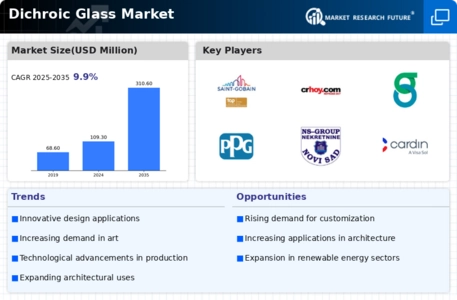Market Analysis
In-depth Analysis of Dichroic Glass Market Industry Landscape
Trade policies and regulations also influence the dynamic nature of dichroic glass markets. Tariffs, import/export restrictions, and other trade barriers can impact the cost of raw materials and finished products, directly affecting manufacturers’ pricing strategies. Participants in this industry should watch out for global trade dynamics so as to be able to take advantage or avoid pitfalls in different regions.
Environmental concerns are increasingly becoming important drivers of changes in dichroic glass industry dynamics worldwide. Manufacturers across industries now have to consider sustainability issues when producing goods .This involves use of recycled materials ,energy efficient manufacturing processes ,and programs aimed at waste reduction .Companies supporting such trends may have an edge over rivals by appealing specifically to eco-sensitive consumers.
The competitive landscape is another critical aspect of the dynamics of the dichroic glass marketplace. Many manufacturers/suppliers create competition among each other that leads innovation and product development processes. Unique designs, good quality products or low prices are some differentiation strategies employed by firms. The global leaders usually invest more in R&D so that they remain ahead as far as technology is concerned while influencing overall market trends.
Dichroic glass market dynamics are also shaped by consumers’ tastes and cultural influences. Fashion, art and interior design trends may impact the demand for specific colors, patterns and uses of dichroic glass. Therefore, manufacturers and designers have to be flexible to those changes in order to remain competitive in the market as well as meet customers’ ever increasing demands.











Leave a Comment